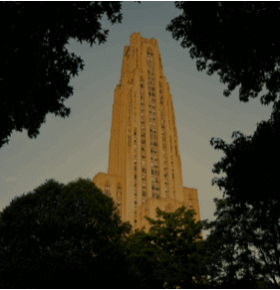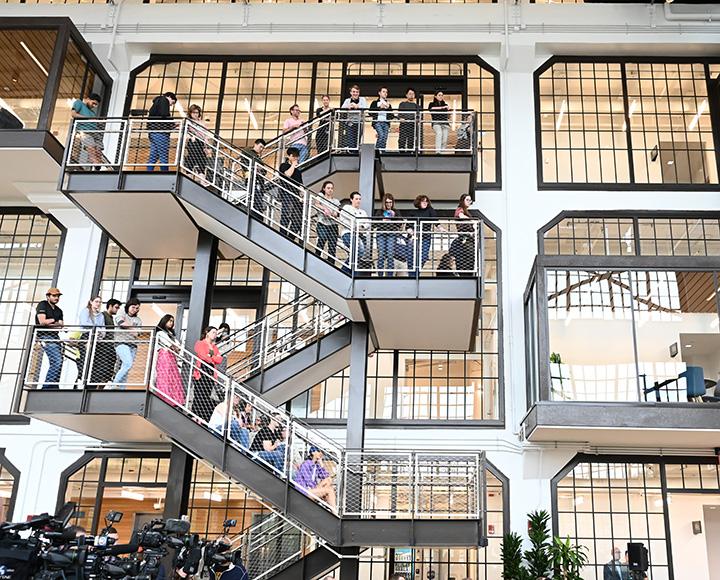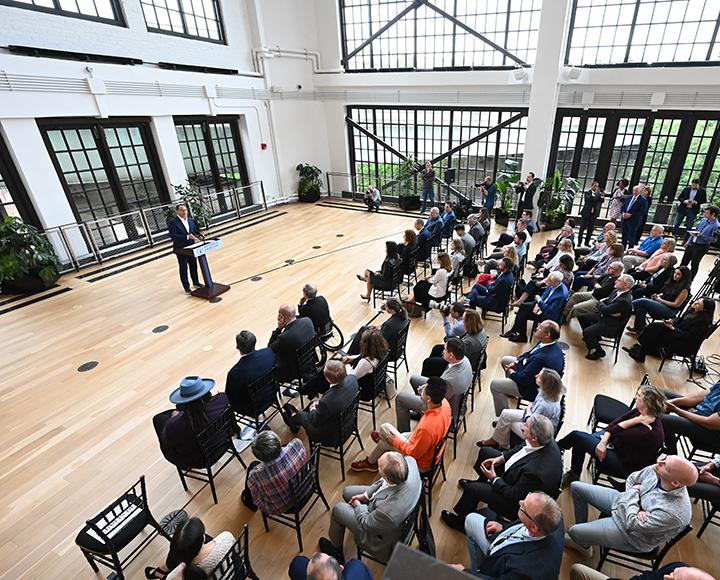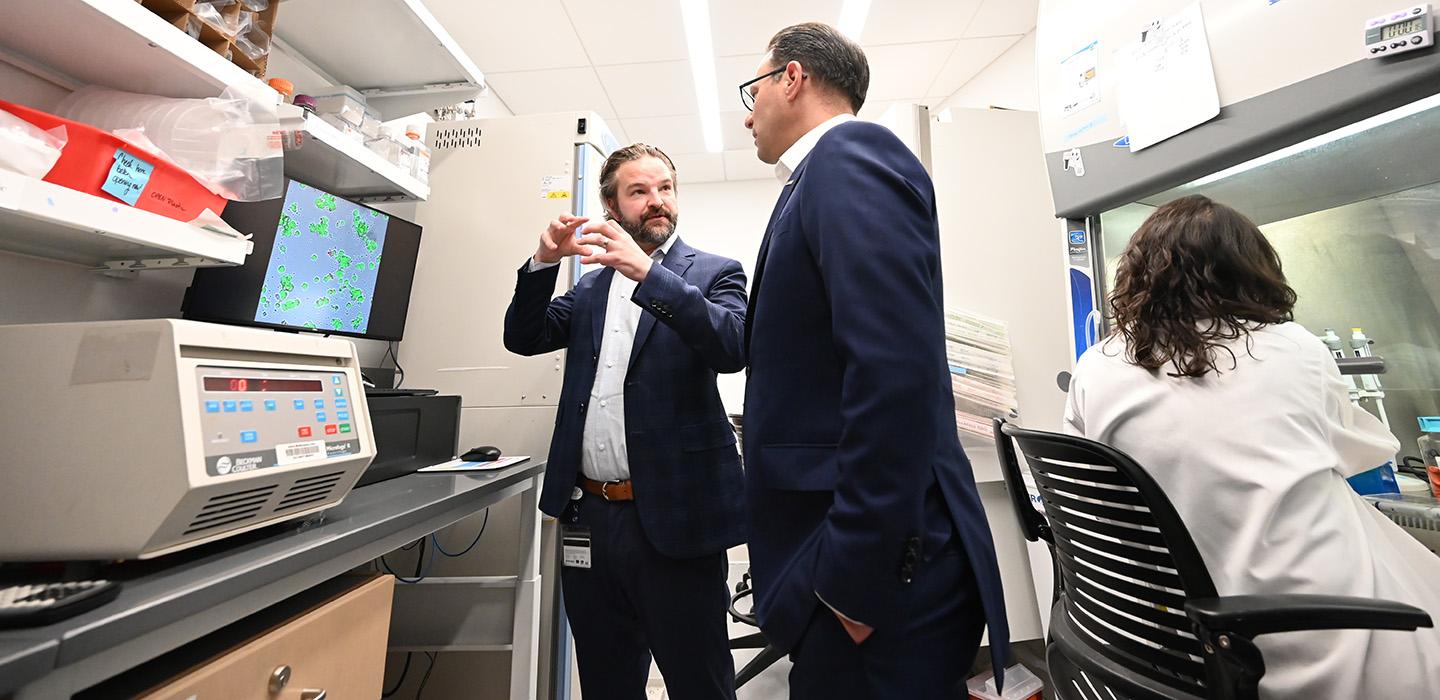
Subscribe to Pittwire Today
Get the most interesting and important stories from the University of Pittsburgh.Pitt is poised to become a global hub for the lifesaving life sciences industry, according to local politicians, community advocates and researchers at the forefront of this transformation. More than 200 people from Pittsburgh and beyond gathered at The Assembly on Tuesday to hear from a small group, including “Pitt dad” and Pennsylvania Gov. Josh Shapiro, to tout the University’s accomplishments and consider its future as a life sciences powerhouse.
Labs at the Assembly, Pitt’s thriving biomedical research center, served as an appropriate backdrop for the discussion on the importance of the life sciences, not only as a driver of health and wellbeing, but also of economic growth in the region and across the state.
Shapiro and Sec. Rick Siger, head of the Pennsylvania Department of Community and Economic Development, were in Pittsburgh to unveil a proposed $50 million PA Innovation program, a plan which includes a one-time $30 million investment to boost job growth in the life sciences sector and $20 million in annual funding to support large-scale innovation in the commonwealth.
Pitt is not sitting back to see what develops in the life sciences. Instead, Kevin Washo, senior vice chancellor for external relations, pointed to the ways in which the University and its partnerships are working together to build a stronger life science ecosystem in the region. And it’s working; Pitt continues to attract researchers and businesses to the area.
“This building is fully occupied,” Washo said of the eight-story, 200,000-square-foot facility filled with floor-to-ceiling windows, laboratories and plenty of co-working space. “As beautiful as this building is, the reality is it’s always been about the people … it’s always been about the research.”
Rory Cooper, director of the Human Engineering Resource Laboratory, noted that he is the beneficiary of life sciences research as well as a contributor to the field. Cooper, himself a wheelchair user, shared his lab’s far-reaching achievements: “We’ve created a technology that’s used in every single power wheelchair in the world,” affording independence to millions of people worldwide. He pointed to research leaders at Pitt, but also at schools across the region.
“Together, we probably have the strongest academic state in the world when it comes to assistive technology.”
Leveraging the strengths of peers and collaborating with partners globally has been key to developing such a strong life sciences program. And, as many speakers noted, Pitt’s interdisciplinary approach has also strengthened the depth and breadth of its breakthroughs, particularly at the intersection of life sciences and artificial intelligence.
Sec. Siger also acknowledged Pitt’s leadership in space and biomedicine. University researchers are studying the physiological and psychological changes that take place in space, nutrition challenges during spaceflight and a host of additional space-related issues with the potential to improve life on Earth. “We’re showing the world that Pennsylvania can be a leader in developing and producing the technology of tomorrow.”


The University is ranked No. 6 in life science expenditures, spending nearly $1.2 billion, per the National Center for Science and Engineering Statistics. According to Pitt’s Office of Industry and Economic Partnerships, more than 1,000 therapeutics, diagnostics and medical devices with potential applications for cancer to metabolic disease to reproductive health are currently available to be licensed. And teams at BioForge are working to demonstrate the impact of scaling and delivering precision medicine more quickly and cost effectively — right here in Pittsburgh’s Greater Hazelwood.
Pittsburgh Life Science Alliance President and CEO Megan Shaw noted that nurturing existing work and enhancing the path to commercialization will bring more than new economic opportunities for universities, inventors and investors: “These investments have huge multiplier effects, creating jobs in construction and in logistics for people throughout the region.”
Gov. Shapiro said he had seen the awesome capabilities at Pitt, both in classrooms and in research hubs like The Assembly. “I believe in science, I believe in research and I believe in the University of Pittsburgh,” he said.
“Those of you on the stairwell,” he said, motioning to young researchers who gathered to listen, “those of you with the big brains, discovering the next big thing that’s going to save lives and create more opportunity, we really believe in you.”
Photography by Aimee Obidzinski


